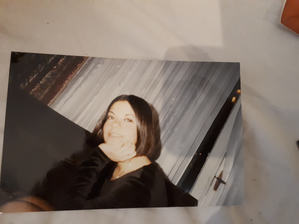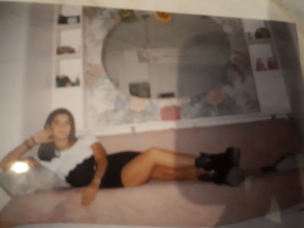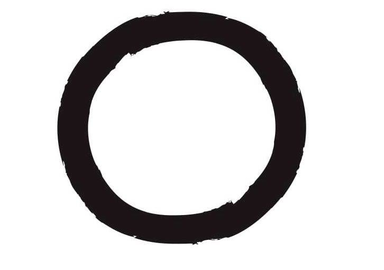Daniel Lepkoff, On Stillness, NYC, April 2001
When I started to dance in 1970, I didn't think about "movements," I just got into "states of being in motion." A state of motion: something like a color, a texture, a timbre; an attraction to the way one's movement feels as one is moving. For example, one state of motion I liked was to be "constantly falling," another was "shaking," another, "playing with running." The first dance techniques I studied-Anatomical Release with Mary Fulkerson and Contact Improvisation with Steve Paxton-had an emphasis on sensing, observing, and analyzing the unimpeded functioning of the body
During the 1980s, in NYC, I began to work with the collaborative performance group Channel Z. Three of the dancers in the group, Diane Madden, Stephen Petronio, and Randy Warshaw, were members of Trisha Brown's company. The way Diane, Stephen, and Randy generated movement was unfamiliar to me. I could not feel or understand the source of their movement invention. I felt challenged and attracted and began to imitate how they moved. It was during this time that I realized I did not have a concept of "a single movement." I did not understand movement as composed of distinct actions linked together to form longer phrases. This seemed to me a big gap in my understanding of how dances were often composed.
I formulated a private project to answer the question: What is one movement? The way I approached this problem was to work with stillness. Stillness was something I did understand. I practiced "becoming still": starting in stillness, moving, and then returning to stillness, and watching that process. The time from one stillness to the next was often on the order of seconds, possibly as long as one minute. I moved for short intervals, looking to trigger an awareness of when a single movement was completed. I taught other people to do this so I could see it from the outside. I began to construct reasons, physical motivations, for entering motion and returning to stillness. I was teaching myself to understand dancing as a series of movements by inserting stillness as punctuation in the flow. I used the word "punctuation," but maybe "interruption" would be better-first you stop, and then you start the interrupted thing again. Once you're still, you realize only the physical movement has stopped; (phenomenology-create the perception to the audience that movement continues sensing what the next action will be); one's sense of what one's next action would have been continues. There is the time to scan for possible other intentions than the one you were having when you stopped. The moment opens to new options: one could continue what one was doing or choose a contrary or skewed direction. One may feel that the moment has no compelling future and is actually an ending point. I practiced stillness as a deconstruction of a flow of action. The idea was to impose a kind of "super consciousness" on one's way of making decisions that, until you figure out how to do it, can seem painstaking. (expansion of time).
Through this exercise, I began to appreciate the design of a movement in space and developed a feeling for the composition of bodies in space. When dancing with others, the act of becoming still works as a communication-letting other dancers in the space know that you have completed a single movement. I used this idea as a mechanism for building an ensemble. Using that score, often a strong rhythm or phrasing develops within a group. When you become aware of that, you can start to shape the duration of things. It's like a game; you begin to read other people's minds and sense how long a particular movement or stillness will last. Working this way, with a limited number of options, you can get on somebody else:s wavelength, which is a nice way of communicating.
Stillness ... When I think of stillness I see the image of a pool of water. This image reminds me of my experiences of stillness in my early work with Mary Fulkerson lying in the constructive rest position. When there is no wind and everything is still, gravity brings the surface of a body of water into a perfectly flat and even surface; you can see the bottom underneath with no distortion. While lying in constructive rest, when the body wants to go somewhere or do something, the muscle cells trigger; they ready themselves to carry out this intention. To give oneself to gravity, one needs to let go of all intention; gravity knows where down is. When something relaxes, it releases its shape and takes the shape that gravity gives it. This is the architecture of the body that is revealed when absolutely nothing is happening, when only gravity acts upon the body Theoretically, this is a state in which the whole body-mind and body-is really receptive to suggestion. (resting)
This deep state of stillness was a place to work with movement, only we worked with simply imagining making a movement. For example: imagining lifting your leg but not moving it, just feeling the physical triggering caused by the act of imagining this movement. I think it's hard to know what this kind of activity feels like unless you have tried it, because there is a subtlety to this level of sensation that one needs to get accustomed to. Imagination sensation
I practiced lying in the rest position a lot, with many other people. Getting into ever deeper states was a shared fascination. Could one maintain the sensitivity to subtle sensations while in daily life? I remember the experience of letting something go, and only realizing I was holding it after I let it go. How is this possible? How can you let something go if you hadn't noticed you were holding it? The nature of this work requires a lot of patience and a lot of gentleness, waiting for the currents of things. It's like making something visible that is already there. Very confusing, because it's not actually being inactive, not even physically inactive. You need to adapt to this way of working; you really have to live in the room to realize that it's not about passivity.
I remember being able to use what I had learned with Mary in the stillness practice of "lying on the floor" when Steve [Paxton] came along and did "standing." A standing stillness is completely different than lying still because you can't stand up without using your muscles. It was interesting but could be very uncomfortable. If you're not aligned right, your muscles will start to ache after a while. Lying on the floor is not as demanding. Anyway, the idea was to let go of every muscle that you didn't need in order to keep standing, an exercise designed to make simply standing up a total risk. You got the feeling you were approaching an edge, experiencing a dialogue of forces that is not occurring when you're in a state of rest while lying on the floor. Each of these states of deep stillness offers different information. (standing uncomfortable positions)
The deeply released, sustained stillness of lying on the floor or standing is a different kind of stillness than. a stillness of suddenly interrupting something in mid-action. There may be a lot of tension and holding in the body when you suddenly suspend a flow of movement; the openness and softness is in the motion of the observing self within one's stillness. (time expansion)
I just thought of another analogy. When you're in a small boat moving on the water, you don't feel the motion of the water. But if the boat becomes still, you feel the water moving beside you. When your body becomes still, the moving water is like all the passing impulses and observations that you have as your observation moves. Physical stillness provides a contrast that reveals the underlying movement of one's attention. Perhaps the essence of stillness is having time to perceive. I think it is possible to maintain the transparency of stillness while one is moving. Time-wideness


